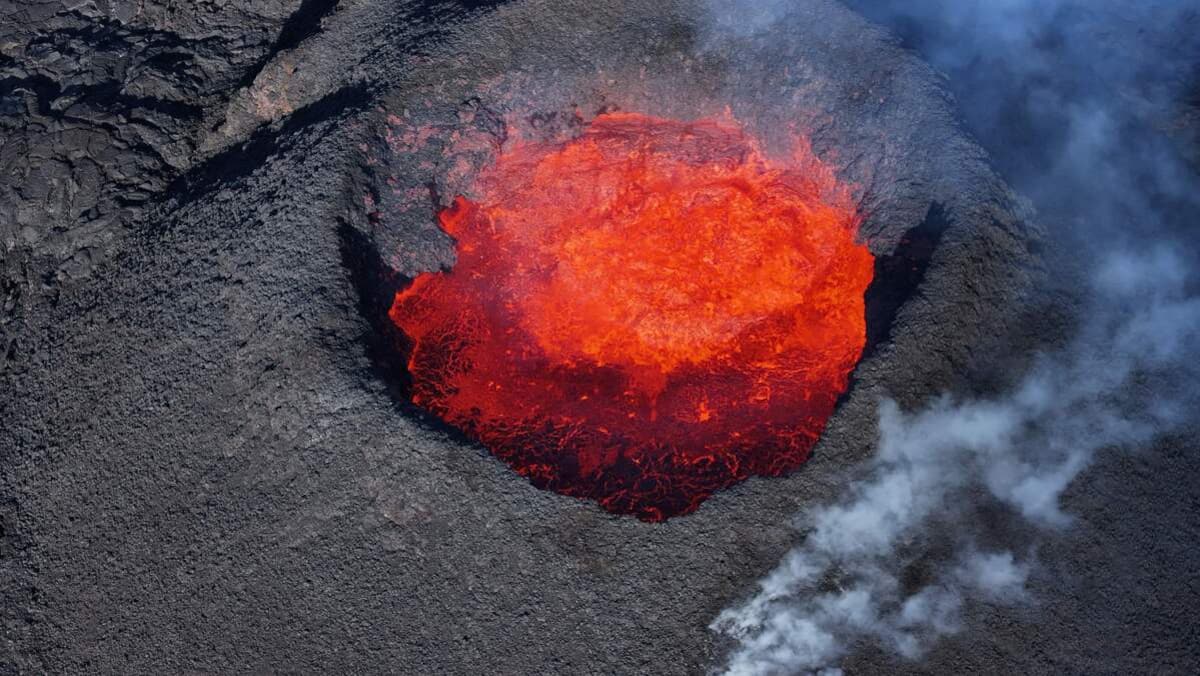A new volcanic eruption broke out on Wednesday on the Reykjanes Peninsula in southwestern Iceland, the Icelandic Meteorological Office (IMO) announced, shortly after authorities evacuated the nearby town of Grindavik.
“An eruption began near Sundhniksjar, north of Grindavik,” the institute said in a statement, three weeks after the end of the previous eruption that had been going on since March 16.
The International Maritime Organization wrote on its website that “the volcanic column reached a height of about 3.5 kilometers at the beginning of the eruption,” and the length of the rift was estimated at more than a kilometer.
A huge cloud of white smoke rose against the blue sky, and glowing orange lava poured abundantly from the ground.
According to volcanologist Benedikt Ovegsson, interviewed by the Icelandic public channel RUV, the rift widened and reached a length of more than 2.5 kilometers one hour after the eruption began.
This is the fifth eruption in the area since December. The International Maritime Organization had reported “intense seismic activity” before the volcano's eruption on Wednesday.
Icelandic airport operator ISAVIA said on its website that Keflavik Airport, Iceland's largest airport, remains open and “operating as usual.”
However, Civil Protection declared a state of emergency in the country.
400 shakes
Eruptions that occurred in the same area in December, January, February and March led to the evacuation of nearly 4,000 residents of the small coastal city of Grindavik, which was affected by lava, in November.
A few fanatics returned to live in their homes in less dangerous neighborhoods, but the vast majority of residents packed their bags and sold their property to the state.
In the days before Wednesday's eruption, about 20 million cubic meters of magma accumulated in the magma chamber below Svartsinje.
This place is home to a geothermal power plant that provides electricity and hot water to 30 thousand people on the Reykjanes Peninsula.
As a precaution, it has been working largely remotely since the first eruption in the area in December. Earthen embankments were built around the power station to protect it.
The famous geothermal baths of the Blue Lagoon, a major tourist attraction in the country, also evacuated all their facilities on Wednesday, a few hours before the eruption began.
The International Maritime Organization announced on Monday that about 400 earthquakes have been measured over the past seven days near the Sundhnúksgígar crater row.
Iceland is home to 33 active volcanic systems, the highest number in Europe. It is located on the Mid-Atlantic Ridge, a fault in the ocean floor that separates the Eurasian and North American tectonic plates and causes earthquakes and eruptions.
The activity recorded since 2021 on the Reykjanes Peninsula testifies to the awakening of a long fault that allows magma to rise after 800 years, volcanologists agree.

“Total coffee aficionado. Travel buff. Music ninja. Bacon nerd. Beeraholic.”






More Stories
Fluoroscopy | “Self-coup”?
This is why you find it difficult to wake up in the morning.
She meets her boss at the airport after taking sick leave.